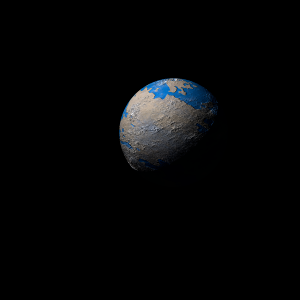|
|
Space Astro
|
Info for exoplanet "Hyuma"
| Scientific (actual) data |
|---|
| Name | TOI-2445 b |
| Planet status | Confirmed |
| Planet mass | 0.006 |
| Radius | 0.12267 |
| Orbital period | 0.371128 |
| Semi major axis | 0.0064 |
| Discovered | 2022 |
| Updated | 2024-06-04 |
| Tzero tr | 2459140 |
| Impact parameter | 0.27 |
| Temperature (kelvin) | 1060 |
| Publication | Published in a refereed paper |
| Detection type | Primary Transit |
| Mass measurement type | Theoretical |
| Radius measurement type | Primary Transit |
| Star name | TOI-2445 |
| Right ascension | 43.32° |
| Declination | 0.05° |
| Mag v | 15.7 |
| Star distance | 48.6 |
| Star mass | 0.25 |
| Star radius | 0.27 |
| Star sp type | M |
| Star temperature | 3330 |
| Wikipedia article | TOI-2445 b |
Back
| |
| Fictional info (?) |
|---|
| Suggested name | Hyuma |
| Planet type | Hot planet |
| The planet telescopically displays the complete range of phases, similar to Venus and the Moon, as it moves in its inner orbit relative to TOI-2445, which reoccurs over the so-called synodic period approximately every 191 days.
A prominent result is the "great orange spot", a giant storm that is known to have existed for centuries since it was first detected by scanner.
Wind speeds can reach 135 metres per second. |
| Atmosphere | Carbonyl sulfide | 97% |
| Ozone | 2.4% |
| Carbon monoxide | 0.077% |
| Ethane | 0.0079% |
| Helium | 0.0012% |
| Atmospheric pressure | 0.006 bar |
 |
| No known satellites |
| Google search for Hyuma |
|
Website by Joachim Michaelis
|
|
|
|